
Recently I returned from Mongolia the land of Genghis Kahn which had long shimmered in my imagination. I wanted to visit the place where the Mongols set out, galloping across the vast expanse of Eurasian steppe, creating the world’s largest contiguous empire from Korea to Hungary.
I wanted to meet nomadic herders who have moved between summer and winter pastures, and sometimes across borders, since time immemorial, and I wanted to see colorful Kazak eagle hunters in action. I was also curious about this newly independent country situated between China and Russia.
After two weeks of exploring and discovery I was sad to leave. My kaliadescopic reflections are of infinite arcing horizons, desert mirages, rugged snowcapped mountain ranges and warm hospitable people. I also found Mongolia, with its population of 3 million, is changing fast.
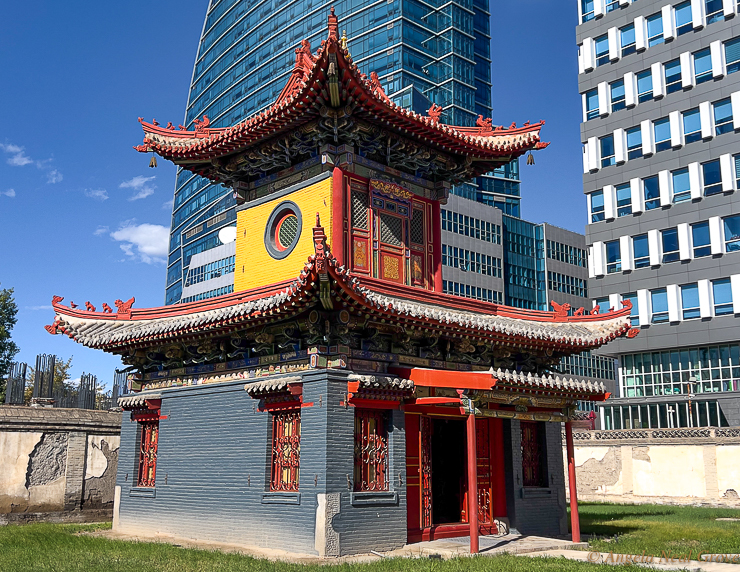
UlaanBator, The City Called UB
Once called Urga, Mongolia’s capital was renamed UlaanBator (red hero) in 1924. Originally a Buddhist nomadic center, gers (yurts) and small buildings clustered around the Bogd Gegeen Monastery which housed over 1000 lamas. It was a hub where long camel caravans laden with goods arrived from Asia and China to trade. Then the majority of the population of Mongolia were nomadic herders.
One hundred years on UB, as many call it, is a vibrant modern capital with a population of around 1.5 million, half of the country’s population. Cranes, shiny new high-rises and cell phone towers jostle for space as they inch up the surrounding grassy hills.
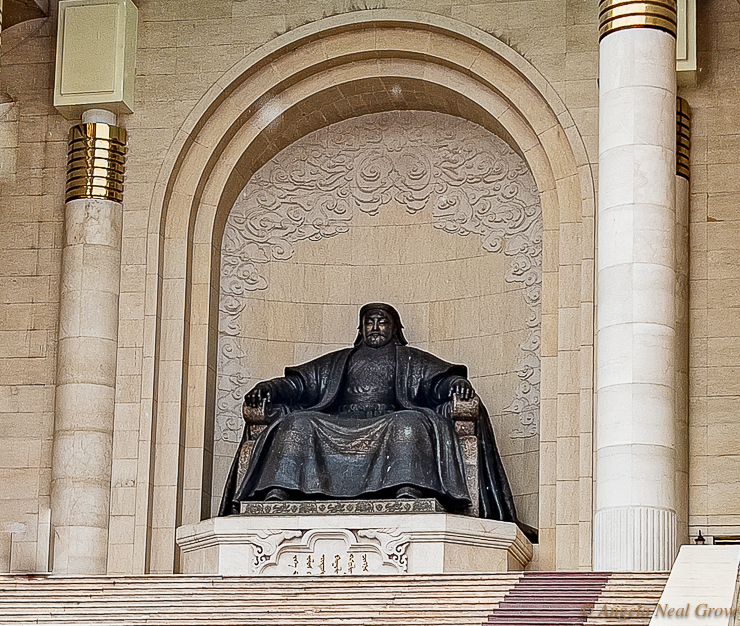
Sukhbaata Square is the city center with parliament buildings and stock exchange. It is also surrounded by museums filled with Mongolian treasures. These give a glimpse into the extraordinary traditional fine arts as well as ancient petroglyphs and carved deer stone monoliths dating back to the Bronze Age, 3000 BCE. On the north side is a recent monument to Genghis Kahn, with a huge statue, built for his 800th anniversary.
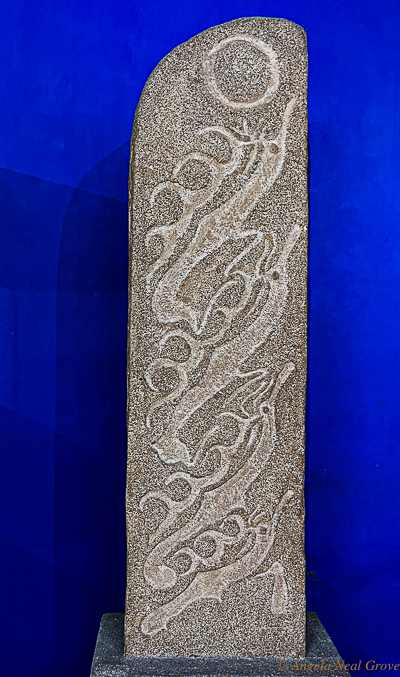

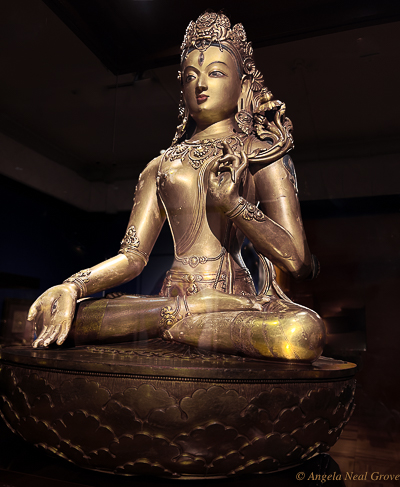
The city has a contagious energy with great restaurants, concerts, night life and of course cashmere shops. It’s a city of young people, many of whom grew up in herding families. After a few action packed days in UB it was time to explore the wide open spaces of desert and steppe and see a very different Mongolia. I flew south to the Gobi Desert.
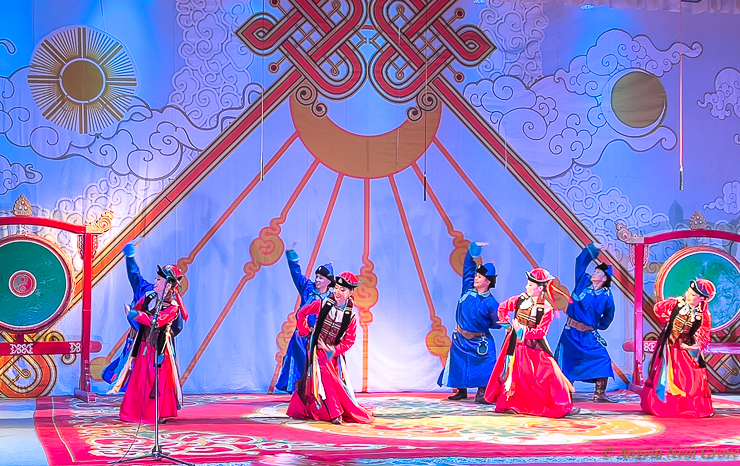
South to the Gobi desert
The Gobi, the 5th largest desert in the world straddles the border of Mongolia and Inner Mongolia Autonomous region of China. I had previously driven across its southern flat grey featureless expanses in late winter when researching The Ancient Silk Road. I was not prepared for the beauty of the Gobi desert this time. Unseasonal rains caused seeds to germinate and the desert to bloom. Stretching into the distance were young tumbleweeds in soft rainbow hues. In a just few weeks they would dry a dull brown and, yes, tumble. For a short time they were unbelievably beautiful.
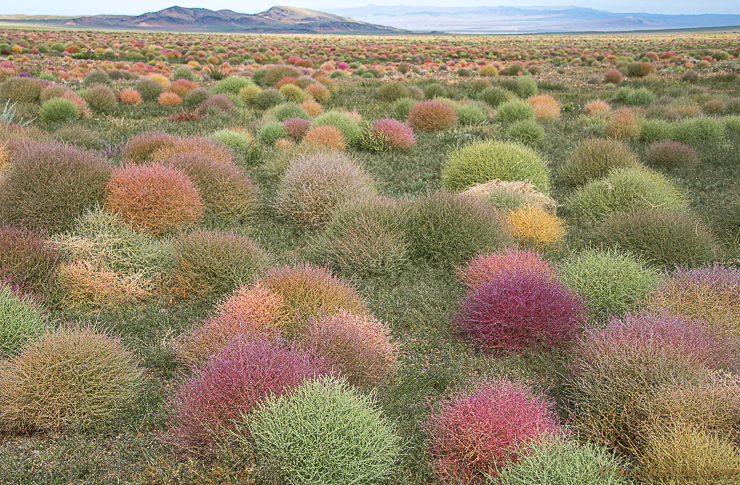
Life in a Ger
In the Gobi I stayed in a Ger, the Mongolian name for traditional nomadic white yurts. Circular, with a collapsible frame and insulating felt padding, these can be hoisted onto a sturdy Bactrian camel and easily moved to fresh pastures. They can be reassembled in less than an hour. In the center is a stove, for cooking and warmth, with a slender chimney. In summer roof ventilation is used to keep Gers cool.
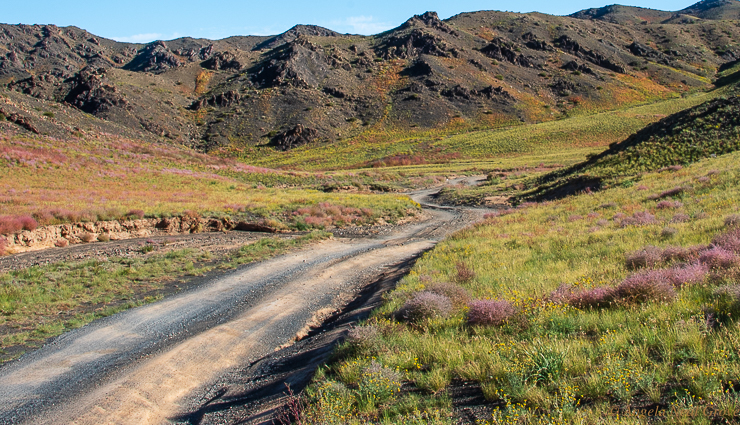
My Ger at Three Camel Lodge was eco friendly with huge solar panels. It was comfortable, and a great introduction. The authentic experience would come later. Opening the small door on the first morning, just before sunrise, the sky was washed with patterns of gold and pink clouds. Shepherd dogs barked a duo and a warm breeze moved sparse grasses as the sun inched into view. Sky and horizon seemed to arc into infinity. This was the Mongolia of my imagination.

The Nomadic Life in Mongolia
Goats, sheep, camels, horses and yak/cows are known as the five snouts or jewels of herding and nomadic life in Mongolia. They provide milk, wool, meat, transportation and fuel.
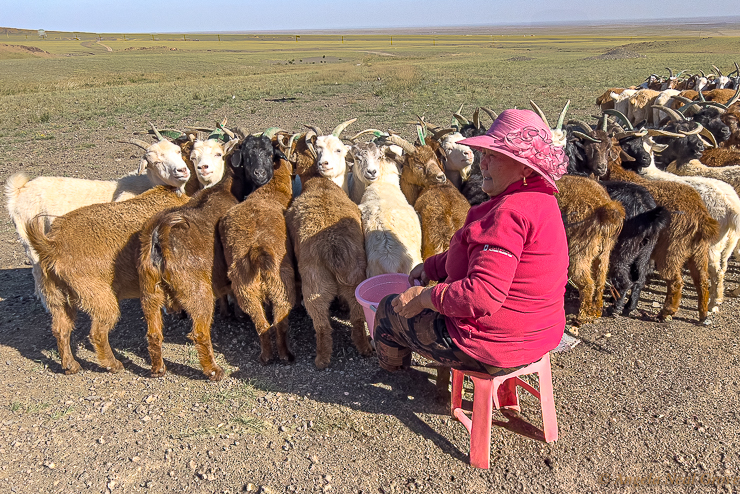
At Khongoryn Els dunes we met a camel herder with a thriving camel herding business. He provides camels for rides and trekking in the area popular with tourists. He invited us into his ger. It was beautifully decorated with traditional floor and wall coverings. It also had modern conveniences including a fridge and a TV.
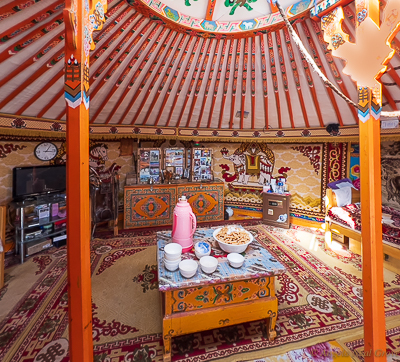
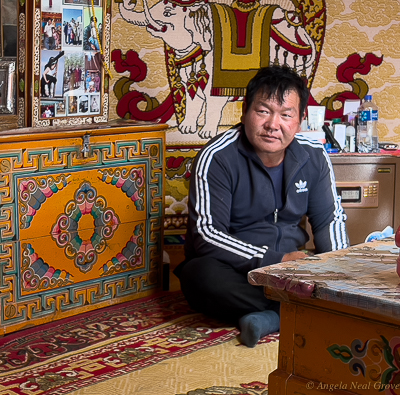
As he sat on the floor he talked about the future and the changes so many herders face today. To get an education his children leave to go to school. But then, this herder explained, his children may not want to return to help him with his business. There was sadness in his voice.
“Perhaps when my children marry and there are grandchildren one of them will come back here and help me.” He said wistfully, tears welling in his brown eyes. This dichotomy is the story of Mongolia today. Like many, this family is torn between the past and a new very different city-based future.
Sand Dunes and Dinosaurs
Kongoryn Els sand dunes in the Gobi Desert rise nearly 1,000 feet they are also called singing sands as they make a curious sound in the constant wind. From a distance they look like whipped cream stretching to the foothills of the granite Altai Mountains. Camel trekking is a good way to see the area, climbing the loose sand of the steep dunes is challenging!
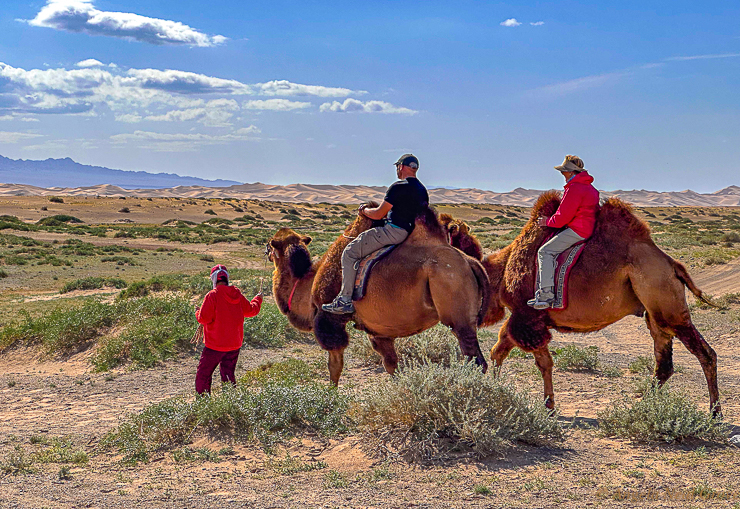
Not far from here is the rugged sandstone escarpment, the Flaming Cliffs where dinosaurs were discovered by Roy Chapman Andrews in the 1920’s. It is the worlds richest location for dinosaur fossils and many found here are now in the American Museum of Natural History in New York.
We spent the afternoon clambering along the crumbling cliffs, staying until the sun sank low in the sky. In the distance flocks of sheep and goats were being herded home by large energetic black sheep dogs.
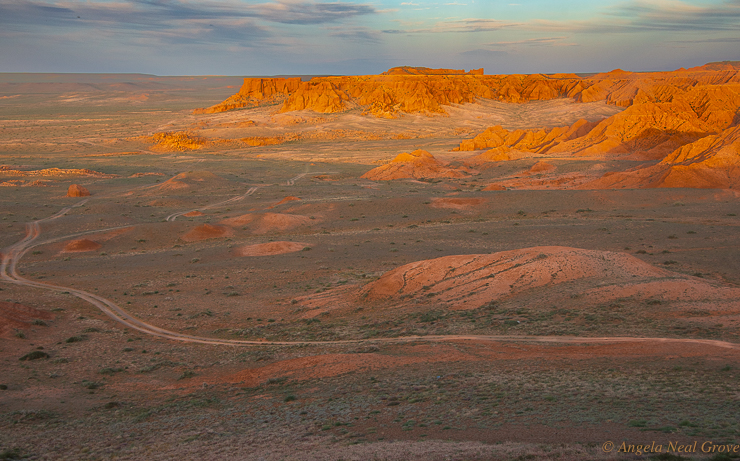
At dusk the cliffs turned a deep flaming orange. The only sounds were of the homeward herds and dogs. I gazed at the plains beyond. It was a moment to stop and reflect on Mongolia the land of Genghis Kahn, with its tapestry of colorful history, legendary players and continental trade routes. This land stretching out below me was a small part of the vast sweep of desert and steppe which stretches across Eurasia.
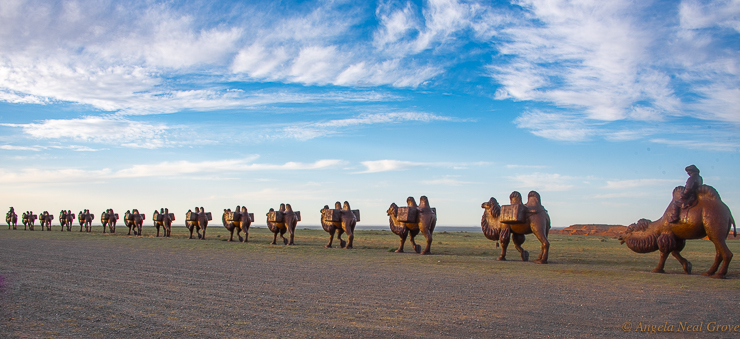
Coming Next!
The next chapter in my journey, Mongolia the Land of Genghis Khan, is visiting the Khazak Eagle Hunters in the Altai Mountains in the far west, staying in a ger camp in this remote region.
Travel with me to the Altai Mountains to the eagle festival. Meet the father of the Eagle Huntress, Aisholpan.
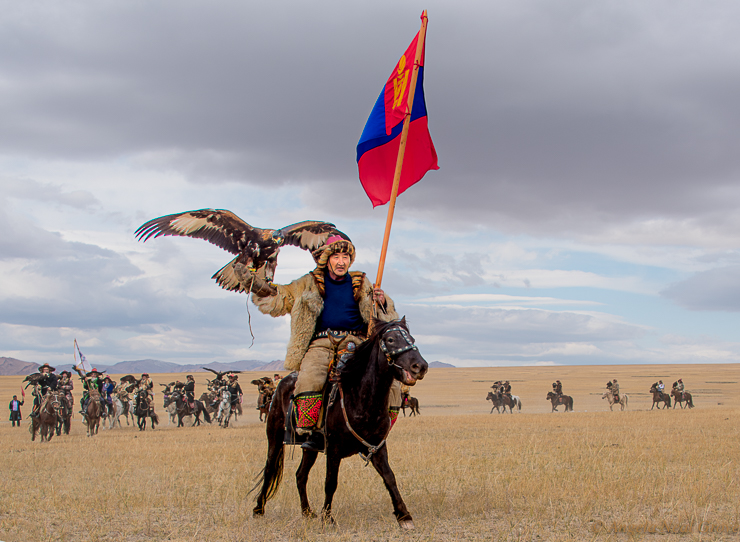
Beautifully WRITTEN, angelane.
What outfitter. Did you use? This also has been a fantasy trip for me
I used Geoex and they were amazing. Best tour guide I have ever, super organized and very hardworking. It is really an amazing country going through so many changes. You would love it!
Angela
AnGELA,
COLORFUL, EXOTIC, REMOTE AND MOST APPEALING
VIEWS OF PEOPLE AND LANDSCAPES IN MONGOLIA.
THE CAMEL HERDER’S GER LOOKS LIKE A TENT PALACE IN MULTIPLE HUES AND TEXTURES. THANKS
FOR THE VICARIOUS THRILLS! GAIL
Thank you, Gail! I love to share! I want to bring these incredible remote regions to everyone’s mailbox. It was amazing journey and I still have not come down to earth!
Angela,
You did a great job capturing the essence of this portion of iur journey. I relive it over and over again. Indeed it was Quite memorable.
It was an epic journey. So memorable – yes so I do I constantly relive this wonderful experience.